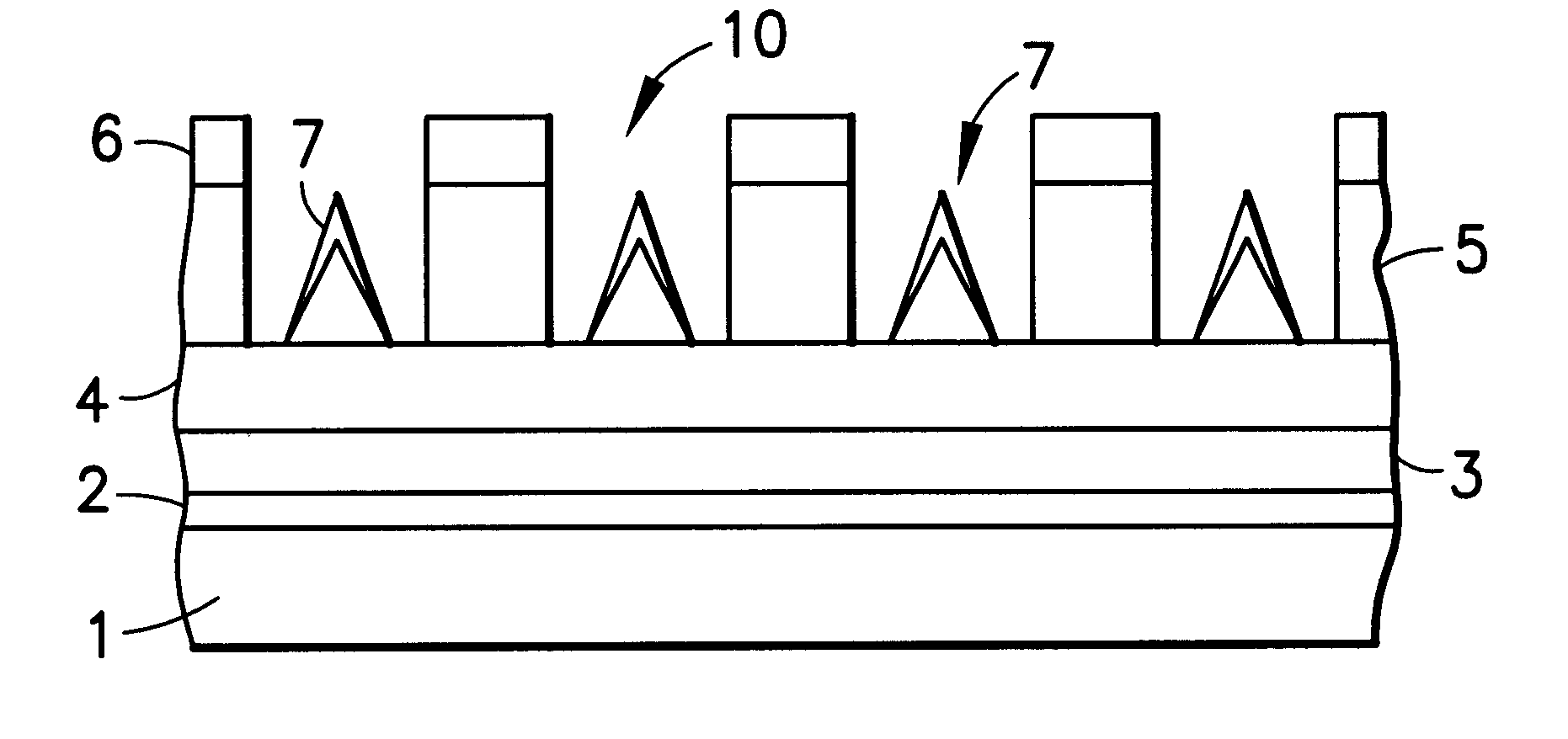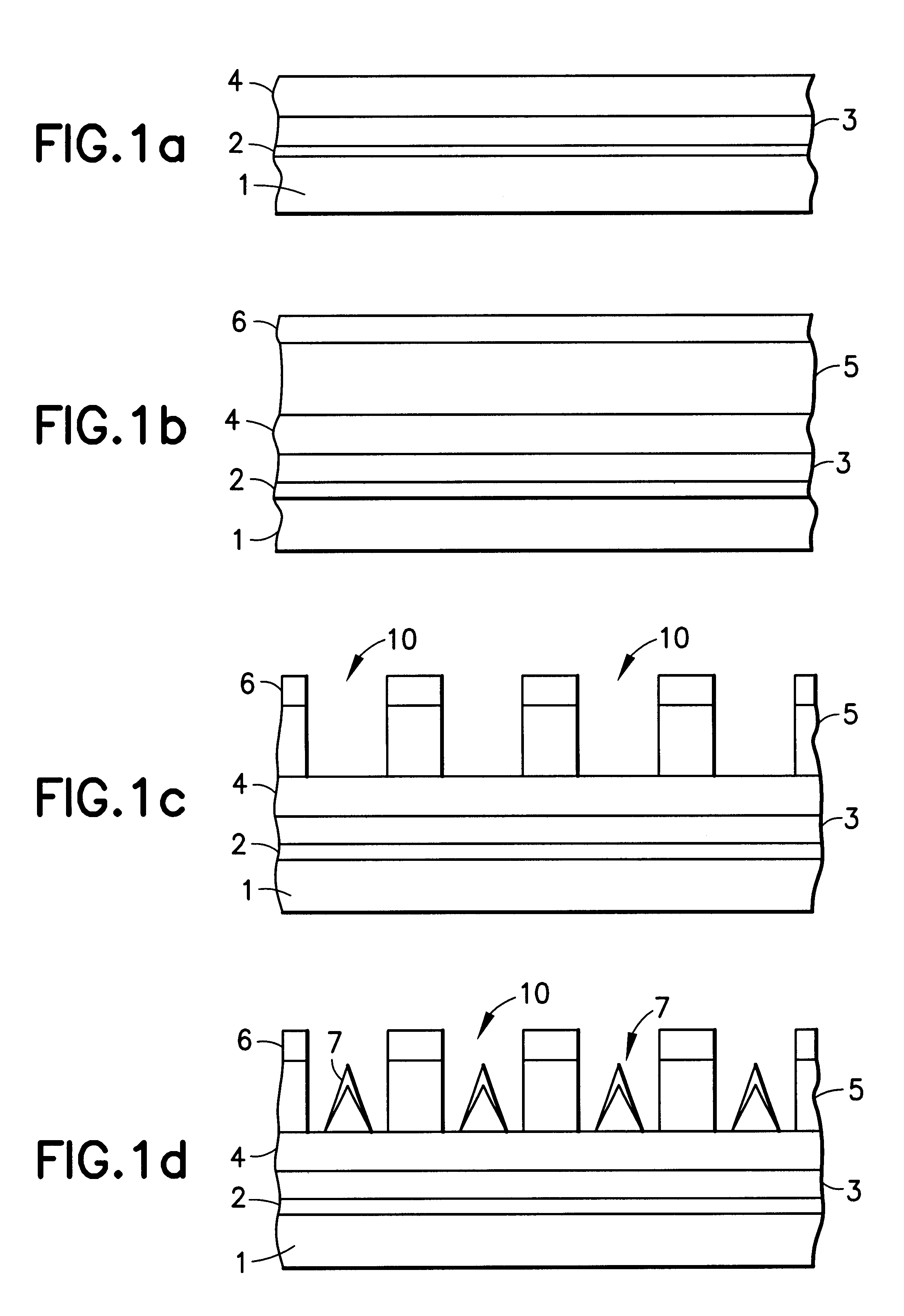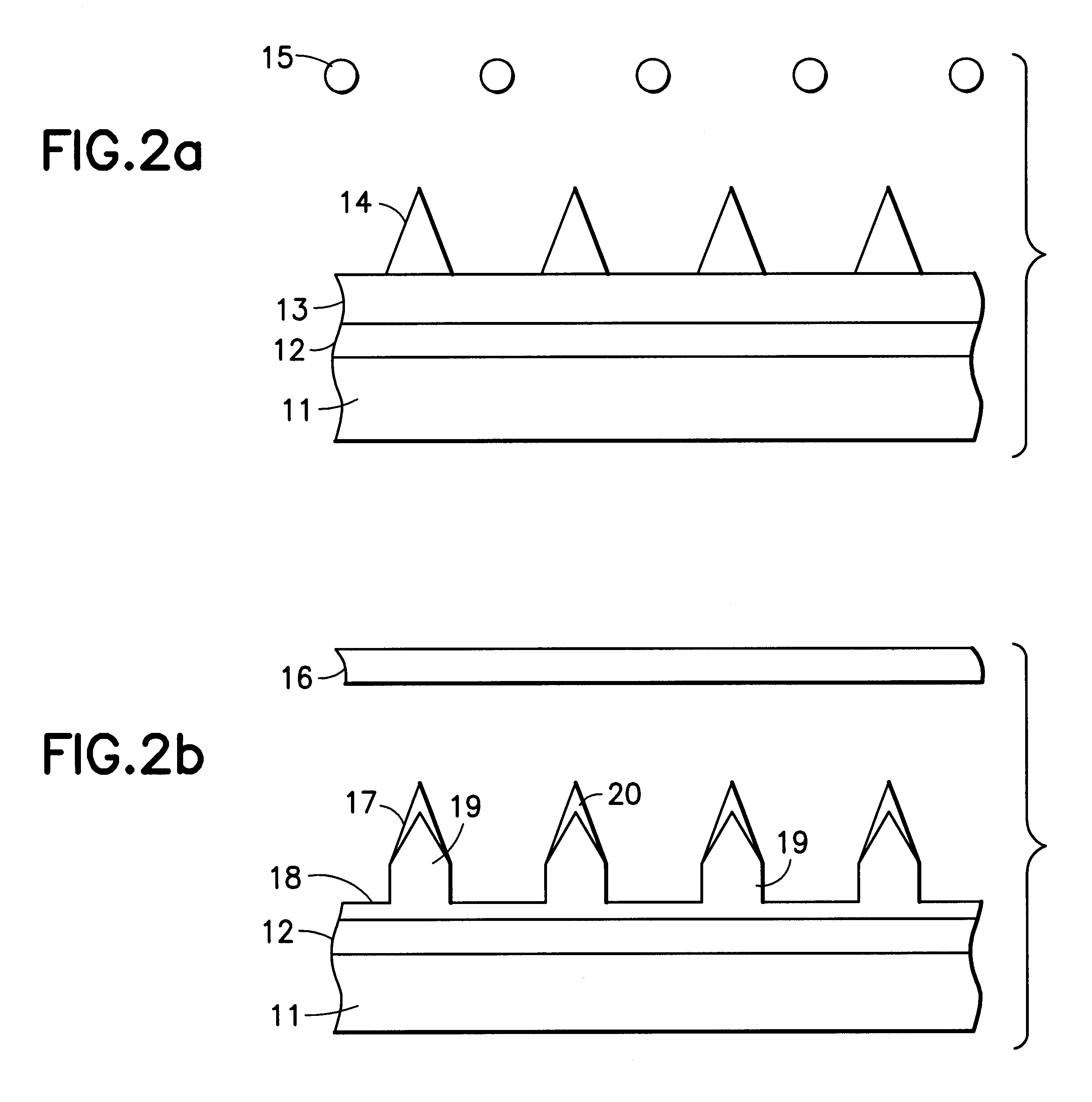Integrated circuit devices and methods employing amorphous silicon carbide resistor materials
a silicon carbide resistor and integrated circuit technology, applied in the manufacture of electrode systems, electric discharge tubes/lamps, tubes with screens, etc., can solve the problems of device inoperableness, non-uniform field emission and varying brightness across the display, and limited development of high-density integrated circuit technology
- Summary
- Abstract
- Description
- Claims
- Application Information
AI Technical Summary
Benefits of technology
Problems solved by technology
Method used
Image
Examples
Embodiment Construction
Amorphous silicon carbide resistor elements can be formed having resistivities ranging from 1 ohm cm to 10.sup.11 ohm cm. This can be accomplished by selecting the silicon to carbon ratio, by introducing impurities that act, at least in part, to terminate or eliminate dangling-bond defects, typically making the material more resistive, and / or donor or acceptor impurities at selected concentrations. In particular, nitrogen can act as a terminating species in amorphous silicon carbide, and can also form nitrides of silicon and / or carbon therein. In either case nitrogen serves to increase the resistivity of the amorphous silicon carbide, such that its resistivity increases with increasing nitrogen concentration.
The ability to select the resistivity of this material within such a large range provides substantial flexibility in selecting device geometry, affording greater circuit density. For example, for flat panel display field emission cathodes having lateral resistor geometries, rela...
PUM
| Property | Measurement | Unit |
|---|---|---|
| thickness | aaaaa | aaaaa |
| thickness | aaaaa | aaaaa |
| thickness | aaaaa | aaaaa |
Abstract
Description
Claims
Application Information
 Login to View More
Login to View More - R&D
- Intellectual Property
- Life Sciences
- Materials
- Tech Scout
- Unparalleled Data Quality
- Higher Quality Content
- 60% Fewer Hallucinations
Browse by: Latest US Patents, China's latest patents, Technical Efficacy Thesaurus, Application Domain, Technology Topic, Popular Technical Reports.
© 2025 PatSnap. All rights reserved.Legal|Privacy policy|Modern Slavery Act Transparency Statement|Sitemap|About US| Contact US: help@patsnap.com



